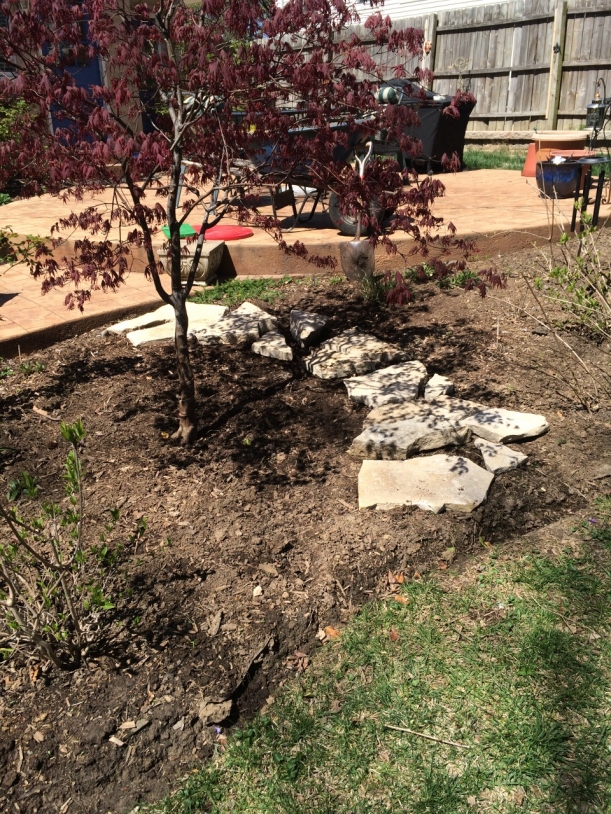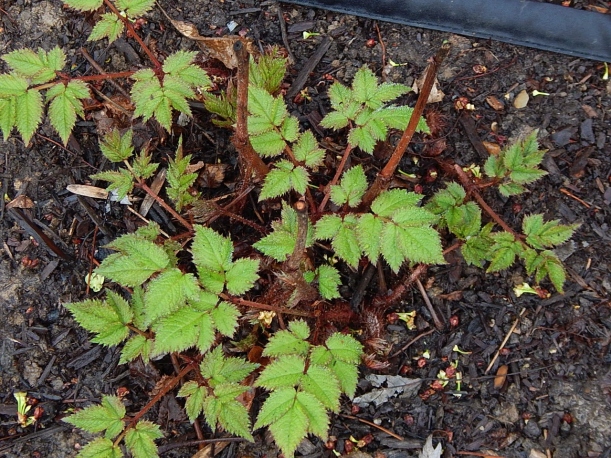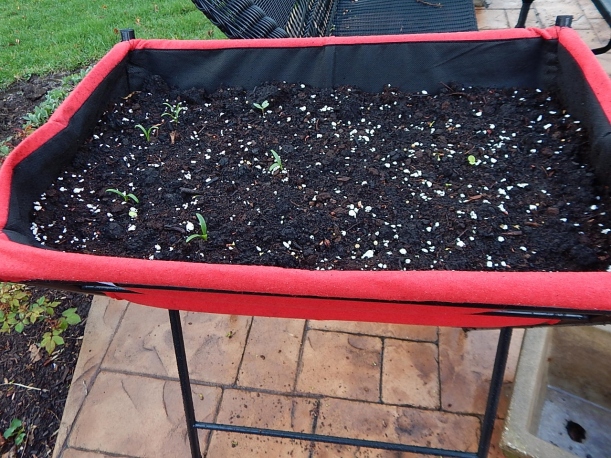 This blog title pretty well describes my day yesterday. First, it was Friday. No explanation needed there. Even better, it was planting day.
This blog title pretty well describes my day yesterday. First, it was Friday. No explanation needed there. Even better, it was planting day.
A group of us at work have come together to plant a container garden outside the patio of one of the buildings. We’ve been planning this for quite some time and have had several meetings to discuss what we’d plant–veggies; when we’d plant–Earth Day; steps needed to take to get this done–get seeds, containers, soil, signs, building approval, watering schedule, weeding volunteers, etc.
As these things tend to go, one thing led to another. I’ve mentioned before that I work with seed and plant experts, so at sometime along the way (like Meeting One) we decided we needed their, ahem, “engagement” in this project. And by that I mean we went begging, asking for quality seed, assistance to grow out the seed and maybe even a little bit of agronomic support. We’d do the rest! Honest. Especially the planting on a Friday part.
“Engagement” wasn’t an issue. This small project taps right to the roots of the joys of gardening. Lots of us love to get our hands dirty; and are as passionate about home gardening as we are about farming. Even one volunteer brought everyone rosemary plants he started at home from seed. Kind of a party favor, if you will. And Nick, a marketing manager for Seminis Vegetable Seeds, was more than happy to provide seeds and supplies so we could showcase the products he is so proud of on campus.
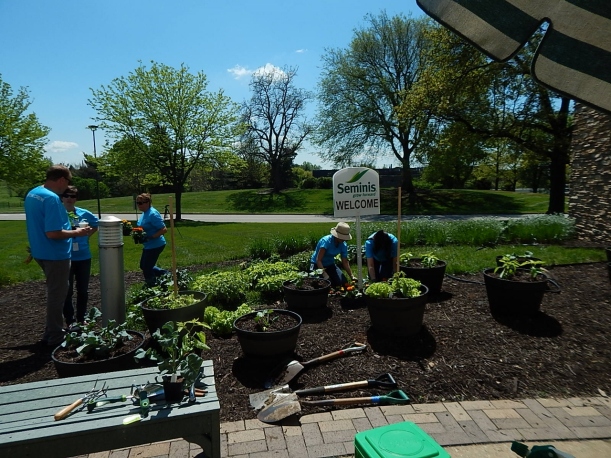 Here’s the lineup of what we’ve got going on. Many are AAS selections. Maybe you’ve planted some of these seeds in your own vegetable gardens:
Here’s the lineup of what we’ve got going on. Many are AAS selections. Maybe you’ve planted some of these seeds in your own vegetable gardens:
- Lettuce: Amanda
- Spinach: Green Beret
- Brocolli:” Artwork (AAS)
- Peppers: Flaming Flare Fresno (AAS), Emerald Fire Jalapeno (AAS), Hot Sunset Banana (AAS), Sweet Sunset Banana (AAS), Flaming Jade Serrano (AAS)
- Squash: Bossa Nova (AAS)
- Tomatoes: Better Boy, Rugged Boy SV0056TD, Dixie Red
- Cucumber: Gateway
- Custard Beans
Eric, one of our planting experts, explained over lunch that our patio garden will have some challenges. The garden’s location gets lots of sun, which is good. It also will give off lots of heat retained by the patio. Fruiting plants like tomatoes will require lots of watering–even on weekends. And we’ll need to be coordinated in our watering schedule. We don’t want to drown the plants and we don’t want to overwater them either.
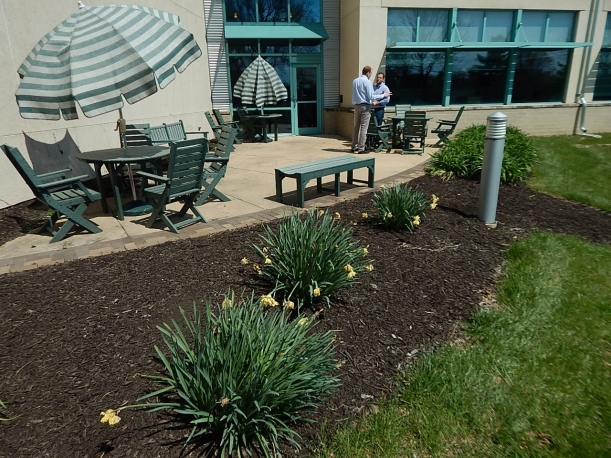
This is the patio bed before the plants were removed. It’s the perfect size for a container garden. Bonus: It gets tons of sun.

The cool season crops like broccoli, lettuce and spinach will soon be replaced by more peppers, zucchini and other warm season vegetables.
I did learn this tidbit: Water deeply to encourage the roots to reach down to the water. I’m guilty of watering too lightly. That encourages shallow root growth. I’ll be more mindful of that in my garden this summer.
And he explained that we’ll need to be on the watch out for leaf molds and fungus, as well as critters who enjoy the fruits of our labor. You’ve heard me complain about squirrels and rabbits. This garden will in all likelihood also include deer.
What started as lots of gardending enthusiasts thinking “Wouldn’t it be neat to have a garden at work?” has become a reality that turned into a really neat way to meet and know new colleagues. We have more in common than where we work. We all love to garden. I’m thinking we could have a plant swap down the road.
Does your office or company gardening opportunities?






 There’s nothing like the need for new gutters to finally motivate me to install a couple of rain barrels. I’d been thinking about installing barrels since I moved in five years ago and even more so when I found myself constantly watering a newly planted parched garden bed baking in the 105 degree heat that second summer.
There’s nothing like the need for new gutters to finally motivate me to install a couple of rain barrels. I’d been thinking about installing barrels since I moved in five years ago and even more so when I found myself constantly watering a newly planted parched garden bed baking in the 105 degree heat that second summer. I’m always interested in conserving resources and being as “green” as I can–every day is Earth Day. The
I’m always interested in conserving resources and being as “green” as I can–every day is Earth Day. The  I’ve embarked on a garden improvement plan, but then what gardener hasn’t? Tired of struggling with the slow fill in of the big bed that runs the length of the patio, I decided it needed some help filling in and plants weren’t going to do it.
I’ve embarked on a garden improvement plan, but then what gardener hasn’t? Tired of struggling with the slow fill in of the big bed that runs the length of the patio, I decided it needed some help filling in and plants weren’t going to do it.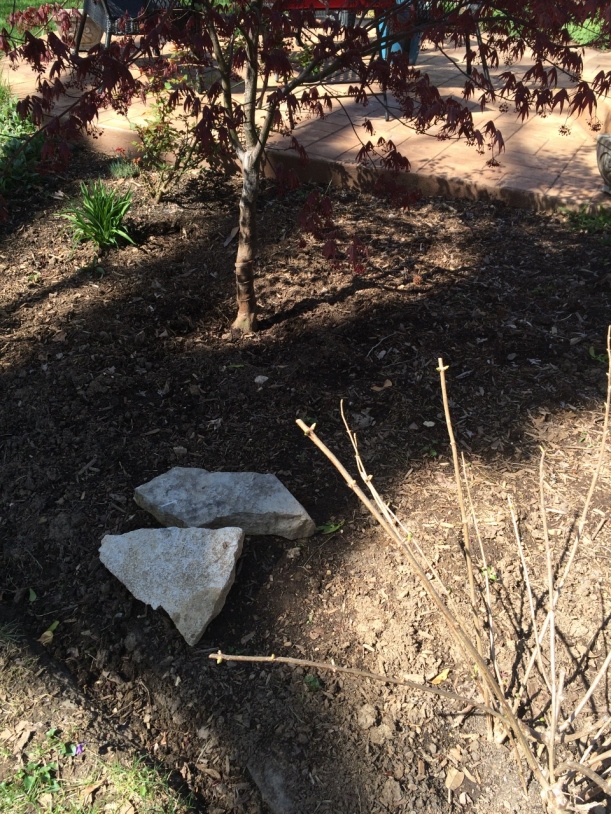 Suddenly I was left with lots of space around the tree. And I discovered two flagstone castoffs in the back of the yard. Well, you know the rest of the story. A quick trip to the nearby materials supply store and I was off to the races. Fortunately the ground is still soft and the soil is pretty good–not the rock hard, compacted clay I encountered when I started this bed in 2012.
Suddenly I was left with lots of space around the tree. And I discovered two flagstone castoffs in the back of the yard. Well, you know the rest of the story. A quick trip to the nearby materials supply store and I was off to the races. Fortunately the ground is still soft and the soil is pretty good–not the rock hard, compacted clay I encountered when I started this bed in 2012.